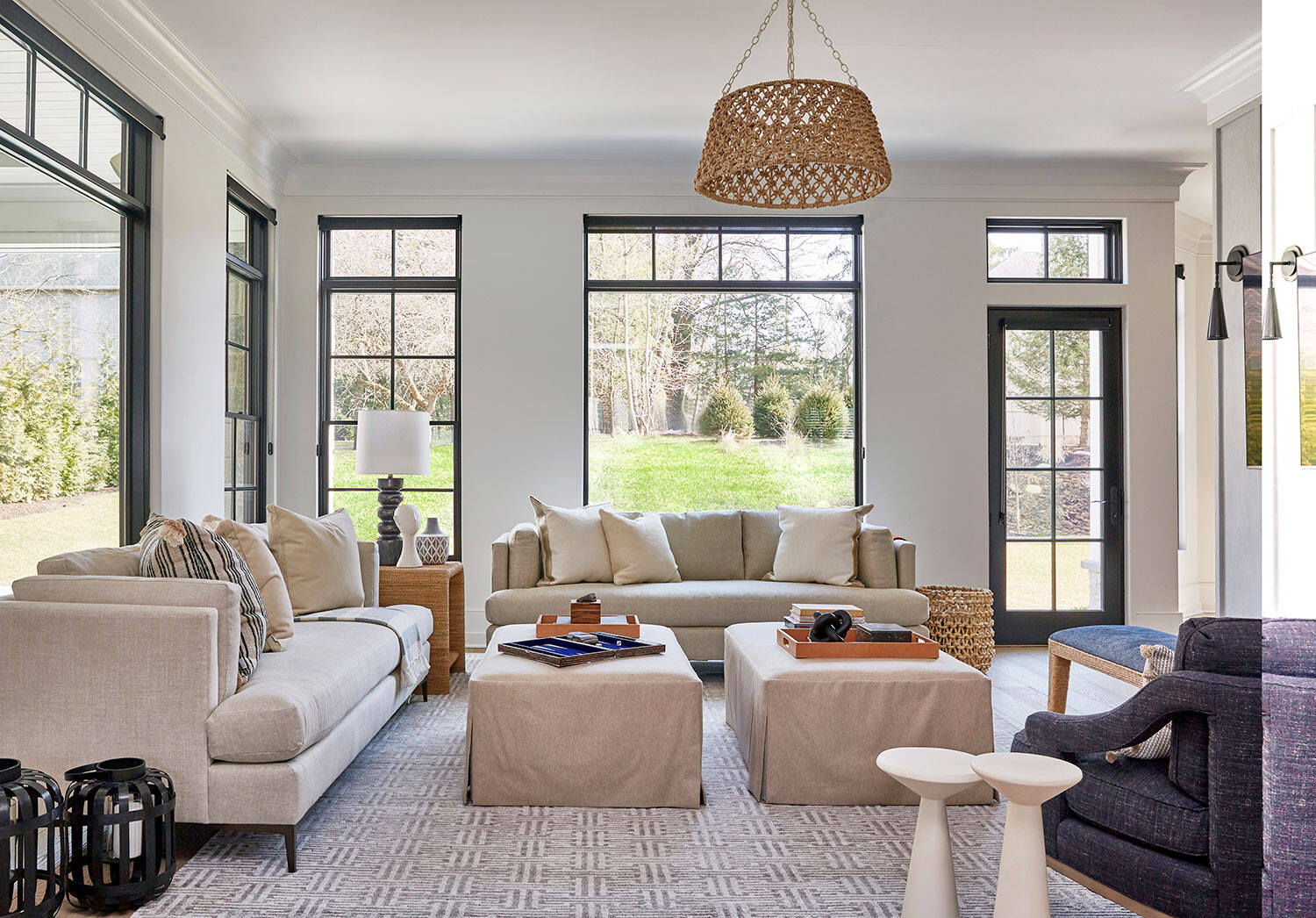

Articles
What Is The Best Paint Color For Living Room
Modified: January 18, 2024
Discover the top paint colors for your living room in our informative articles. From soothing neutrals to bold accent shades, find the perfect hue to transform your space.
(Many of the links in this article redirect to a specific reviewed product. Your purchase of these products through affiliate links helps to generate commission for Storables.com, at no extra cost. Learn more)
Introduction
Choosing the perfect paint color for your living room can be a daunting task. The color you select sets the tone and atmosphere of the space, making it crucial to find the right balance between personal preference and design aesthetics. Whether you want to create a cozy and inviting ambiance or make a bold statement, there are various factors to consider when deciding on a paint color.
In this article, we will explore different factors to consider and provide you with some inspiring paint color ideas for your living room. From neutral tones to bold and vibrant hues, as well as calming and soothing shades, we will help you find the best paint color to transform your living room into a space that reflects your style and creates a welcoming environment for family and friends.
Key Takeaways:
- Create a Timeless Look: Neutrals like beige, gray, and white offer versatility and adaptability, providing a solid foundation for your living room that can easily complement different design styles and color schemes.
- Add Personality with Accents: Incorporating accent walls in rich jewel tones or earthy hues, along with metallic accents, can elevate the visual appeal of your living room, creating a captivating and sophisticated ambiance.
Read more: What Color To Paint A Living Room
Factors to Consider When Choosing a Paint Color for Your Living Room
Before diving into specific paint color ideas, it is important to consider a few key factors that can help guide your decision-making process. These factors include:
1. Room Size and Natural Light: The size of the living room and the amount of natural light it receives can greatly influence the choice of paint color. Lighter shades can make a small room appear larger, while dark colors can create a cozy atmosphere in a larger space.
2. Existing Décor: Take a look at the existing furniture, flooring, and other elements in your living room. Consider how the paint color will complement or contrast with these elements to create a cohesive and harmonious look.
3. Overall Style and Mood: Think about the overall style and mood you want to achieve in your living room. Do you prefer a modern and minimalist look, a cozy and rustic vibe, or a vibrant and eclectic style? The paint color can play a significant role in setting the tone for the space.
4. Personal Preference: Ultimately, your personal preference and taste should guide your decision. Consider the colors you are naturally drawn to and how they make you feel. After all, your living room should be a place where you feel comfortable and happy.
5. Longevity: While it’s important to choose a paint color that reflects your current style and preferences, also consider its longevity. Will the color stand the test of time, or will you tire of it quickly? It’s a good idea to select colors that have a timeless appeal to ensure your living room remains in style for years to come.
By taking these factors into account, you can narrow down your options and make a well-informed decision when choosing a paint color for your living room. Now, let’s explore some inspiring paint color ideas to help you get started!
Neutrals for a Timeless and Versatile Look
When it comes to paint colors for your living room, neutral tones are a popular choice for their timeless appeal and versatility. Neutrals create a calm and elegant backdrop that can easily adapt to different design styles and complement a wide range of furnishings. Here are three classic neutral shades to consider:
- Beige: Beige is a warm and soothing neutral color that works well in both traditional and modern living rooms. It adds a cozy and inviting feel to the space and pairs beautifully with earthy tones, wooden furniture, and textured fabrics. Beige also complements a variety of accent colors, allowing you to easily change up the look of your living room without repainting the entire space.
- Gray: Gray has become increasingly popular in recent years for its ability to create a sophisticated and contemporary atmosphere. From light gray to charcoal, there are numerous shades to choose from, making gray a versatile option for any living room. It pairs well with both warm and cool tones, allowing you to incorporate pops of color through accessories or artwork.
- White: White is a classic neutral color that brings a sense of brightness and airiness to a living room. It creates a fresh and clean backdrop, making the space appear larger and more open. White also allows for endless possibilities when it comes to accent colors and décor choices. However, it is important to consider lighting and maintenance, as white walls may require more frequent cleaning to maintain their pristine look.
Whether you opt for beige, gray, or white, neutrals provide a versatile foundation that can be easily updated with different accessories, textiles, and furniture styles. They also have the advantage of being less likely to clash with existing décor or go out of style, making them a safe and reliable choice for your living room.
Beige
Beige is a timeless and versatile neutral color that can create a warm and inviting atmosphere in your living room. It is often associated with a sense of comfort and relaxation, making it an excellent choice for those seeking a cozy and welcoming space.
One of the key advantages of using beige as a paint color is its ability to complement a wide range of other colors and design styles. Whether you prefer a traditional, transitional, or modern look, beige can easily adapt and harmonize with different elements in your living room.
When it comes to choosing the perfect shade of beige, consider the following factors:
- Warm or cool undertones: Beige can have warm or cool undertones, depending on the specific hue. Warmer beiges have a hint of yellow or red, while cooler beiges have undertones of gray or blue. Consider the overall color scheme and lighting in your living room to determine which undertone will work best for your space.
- Contrasting or monochromatic scheme: Beige can be used in a variety of ways to create different effects. For a more subtle and monochromatic look, consider pairing beige walls with similar-toned furniture and accessories. If you prefer a more dramatic and contrasting scheme, use beige as a backdrop for bolder accent colors such as navy blue, emerald green, or mustard yellow.
- Texture and finishes: To add visual interest and depth to your beige living room, consider incorporating different textures and finishes. This can be achieved through textured wallpaper, patterned fabrics, or furniture with interesting details. These elements will help prevent the space from looking flat and monotonous.
In terms of styling, beige is incredibly versatile. It works well with natural materials such as wood, rattan, and jute, adding a touch of warmth and earthiness to the space. Beige also complements a wide range of colors, allowing you to easily switch up your living room’s accent colors with throw pillows, artwork, and other accessories.
Overall, beige is a safe and reliable choice for your living room, providing a neutral backdrop that can be easily personalized and adapted to your style preferences. It offers a timeless appeal that will ensure your living room remains stylish for years to come.
Gray
Gray is a versatile and sophisticated neutral color that has become increasingly popular in interior design. It offers a modern and elegant look and can beautifully transform your living room into a stylish and contemporary space.
One of the great advantages of using gray as a paint color is its versatility. Whether you prefer a light gray or a deep charcoal shade, there are numerous options to choose from that can suit your personal style and complement your existing decor.
Here are some reasons why gray is a fantastic choice for your living room:
- Timelessness: Gray is a timeless color that transcends trends, making it a smart and long-lasting choice. It has the ability to create a neutral yet sophisticated backdrop that can easily adapt to different design styles and color schemes. Whether you prefer a minimalist, industrial, or eclectic look, gray can effortlessly blend in.
- Neutral canvas: Gray serves as a neutral canvas that allows you to experiment with a variety of accent colors and textures. It pairs well with both cool and warm tones, providing endless possibilities when it comes to accessorizing your living room. You can add pops of color through vibrant artwork, bold upholstery, or statement accessories.
- Depth and dimension: Gray has the ability to add depth and dimension to your living room. Its cool undertones can create a sense of calm and tranquility, while its darker shades can evoke a cozy and intimate ambiance. By playing with different shades of gray, you can create visual interest and make your living room feel more dynamic.
When using gray as a paint color, consider the following tips:
- Lighting: Gray can appear differently depending on the lighting in your living room. It’s important to test samples of gray paint in the space and observe how it looks in different lighting conditions. Take note of how natural light and artificial light sources affect the color to ensure that you choose the shade that best suits your preferences.
- Contrasting elements: To prevent your gray living room from looking flat or monotonous, incorporate contrasting elements and textures. Consider using pops of color, such as vibrant throw pillows or a boldly patterned rug, to create visual interest. Additionally, mix different textures, such as a plush velvet sofa or a sleek metallic coffee table, to add depth and dimension.
- Warm or cool tones: Gray comes in warm and cool tones, so consider the overall color scheme and style of your living room. Cool gray shades with blue undertones can create a more contemporary and minimalist feel, while warm grays with beige or taupe undertones can give a cozier and more traditional look. Choose the shade that best complements your vision for the space.
Incorporating gray into your living room can create a sophisticated and stylish environment. Whether you opt for a light gray or a darker charcoal shade, gray offers endless possibilities and allows you to showcase your personal style when decorating your space.
Read more: What Colors To Paint A Small Living Room
White
White is a classic and timeless choice for a living room paint color. It exudes a sense of purity, cleanliness, and openness, making it a popular option for those seeking a bright and airy space.
Using white as a paint color in your living room offers numerous benefits:
- Light and spaciousness: White reflects light, making the room appear brighter and more spacious. If you have a smaller living room or limited natural light, choosing white as the main color can help create the illusion of a larger and airier space.
- Versatility: White serves as a neutral backdrop that can easily adapt to different design styles and color schemes. It pairs well with any other colors, allowing you to change up your living room’s look simply by adding or switching out accessories or accent pieces.
- Timelessness: White is a timeless color that never goes out of style. It creates a clean and sophisticated look that can withstand changing trends and design fads. This makes white a great choice if you want a living room that will remain stylish and timeless for years to come.
When using white as the main paint color in your living room, consider the following tips:
- Varying shades: White doesn’t have to be a single flat color. Experiment with different shades of white to add depth and visual interest to your living room. Consider using a warmer white with a hint of yellow or a cooler white with a touch of blue, depending on the desired atmosphere.
- Texture and contrast: To prevent a white living room from feeling too sterile or bland, incorporate different textures and contrasting elements. Add texture through furniture upholstery, rugs, curtains, or decorative wall panels. Introduce contrast by using darker or brighter colors for furniture, artwork, or accessories.
- Consider lighting: When working with white, lighting is crucial. Ensure that your living room receives ample natural light to enhance the brightness of the white walls. Incorporate artificial lighting, such as ceiling fixtures, floor lamps, or task lighting, to create a warm and inviting ambiance in the evenings.
While white can create a serene and elegant living room, there are a few considerations to keep in mind. White walls can show dirt and scuff marks more easily, so regular cleaning and maintenance are essential. Additionally, if your living room has little natural light or features predominantly cool-toned furniture and accessories, you may want to consider warmer shades of white to add coziness.
Incorporating white into your living room’s color palette provides a clean and versatile canvas that allows you to showcase your personal style without overpowering the space. It offers a sense of freshness and timelessness that can create a soothing and inviting environment.
Bold and Vibrant Hues for a Statement-Making Space
If you want to make a bold and unforgettable statement in your living room, consider using vibrant and eye-catching hues as your paint colors. These shades can inject energy, personality, and a sense of excitement into the space. Here are three bold color options to consider:
- Navy Blue: Navy blue is a sophisticated and luxurious color that can create a dramatic and elegant living room. It adds depth and richness to the space, evoking a sense of calm and serenity. Navy blue works well as a focal wall color or as an accent color paired with neutrals, metallic accents, or complementary shades like coral or mustard yellow.
- Emerald Green: Emerald green is a vibrant and lush color that brings a touch of nature indoors. It exudes opulence and creates a sense of freshness and vitality. Use emerald green as an accent color by painting one or two walls, or incorporate it through furniture upholstery, decorative accessories, or a statement piece like a velvet sofa. Pair emerald green with gold or brass accents for a luxurious and glamorous look.
- Mustard Yellow: Mustard yellow is a warm and bold color that adds a vibrant and cheerful atmosphere to your living room. It can instantly brighten up the space and create a lively and energetic ambiance. Use mustard yellow as an accent color through pillows, curtains, or artwork, or paint a feature wall to make a bold statement. Pair mustard yellow with neutrals like gray or beige for a balanced and modern look.
Integrating bold colors into your living room allows you to showcase your unique style and personality. While using vibrant hues can be exciting, it’s important to consider the following tips:
- Balance: When working with bold colors, it’s crucial to balance them with neutral tones or softer shades. This will prevent the space from feeling overwhelming or visually chaotic. Incorporate neutrals through furniture, flooring, or accessories to create a harmonious and well-rounded look.
- Focal point: Choose one wall or a specific area of your living room as a focal point for the bold color. This will allow the color to make a statement without overpowering the entire space. Consider painting a fireplace wall, an alcove, or a recessed bookshelf to draw attention to the vibrant hue.
- Consider natural light: Keep in mind that natural light can affect how bold colors appear in your living room. Vibrant hues may appear more intense under direct sunlight, while they might look darker or more subdued in a dimly lit room. Test paint samples in different lighting conditions to make sure you achieve the desired effect.
By incorporating bold and vibrant hues into your living room, you can create a space that reflects your personality and makes a striking impression. These colors can infuse energy and life into the room, creating a visually captivating and engaging environment for you and your guests to enjoy.
Navy Blue
Navy blue is a versatile and sophisticated color that can make a bold statement in your living room. Its deep, rich hue adds a sense of depth and elegance, creating a space that is both visually striking and calming.
There are several ways to incorporate navy blue into your living room:
- Focal Wall: Paint one wall in your living room with navy blue to create a focal point. This will draw attention and add depth to the space. Consider choosing a wall with architectural features like a fireplace or built-in shelving to enhance the impact of the color.
- Complementary Accents: Use navy blue as an accent color throughout your living room. This can be done through throw pillows, curtains, area rugs, or decorative accessories. Navy blue pairs beautifully with neutrals like white, beige, or gray, as well as metallic accents like gold or silver.
- Furniture: Incorporate navy blue through furniture pieces, such as a plush sofa or armchair. This adds a touch of elegance and sophistication to the space. Mix navy blue furniture with lighter-colored walls and accessories to create a balanced and visually appealing look.
When using navy blue as a paint color, here are a few tips to consider:
- Lighting: Navy blue can appear darker in rooms with limited natural light. Consider adding adequate lighting through ceiling fixtures, floor lamps, or wall sconces to prevent the space from feeling too dim. If you have large windows that allow plenty of natural light, the navy blue will create a cozy and intimate atmosphere.
- Contrasting Colors: To make your navy blue living room stand out, consider using contrasting colors for furniture, art, and accessories. Opt for lighter or brighter colors, like vibrant yellows or crisp whites, to create a visually dynamic space.
- Patterns and Textures: Incorporate patterns and textures in your navy blue living room to add interest and depth. Consider using patterned throw pillows, textured rugs, or decorative wall panels to create a visually stimulating environment.
Navy blue can work well in a variety of design styles, from traditional to modern. It adds a touch of sophistication and creates a cozy and inviting atmosphere. Whether used as a focal wall or through accents and furniture, navy blue can transform your living room into a space that exudes elegance and character.
Emerald Green
Emerald green is a vibrant and lush color that can bring a sense of freshness and luxury to your living room. Its deep green hue instantly grabs attention and adds a touch of elegance and opulence to the space.
Here are some ideas on how to incorporate emerald green into your living room:
- Accent Wall: Paint one wall with emerald green to create a focal point in your living room. This will make a bold statement and add depth to the space. Consider choosing a wall that showcases architectural details or serves as a backdrop for a gallery of artwork.
- Furniture: Introduce emerald green through furniture pieces, such as a velvet sofa or accent chair. These bold furniture choices will become the centerpiece of your living room, adding a luxurious and inviting touch to the space. Pair them with neutral walls and accessories to create a balanced and harmonious look.
- Accessories and Upholstery: Use emerald green through decorative accessories and upholstery. Pillows, curtains, rugs, and throws in this striking hue can add pops of color and create a cohesive look in your living room. Consider combining emerald green with complementary colors like gold or brass accents for a glamorous and sophisticated feel.
When incorporating emerald green into your living room, keep the following tips in mind:
- Balance with Neutrals: To ensure that the emerald green doesn’t overwhelm the space, balance it out with neutral colors. Use white, cream, or beige as the main wall color or for larger furniture pieces. This will create a visually appealing contrast and allow the emerald green to stand out.
- Natural Elements: Emerald green pairs beautifully with natural elements like wood, rattan, and plants. Consider incorporating wooden furniture, woven baskets, or indoor plants into your living room’s design to enhance the earthy and organic feel of the emerald green.
- Lighting: Proper lighting is essential to showcase the richness and vibrancy of emerald green. Make sure your living room has adequate natural and artificial lighting to highlight this striking color. Use a combination of ceiling lights, floor lamps, and table lamps to create a warm and inviting atmosphere.
Emerald green creates a refined and captivating living room environment. This bold color choice can transform your space into a sophisticated oasis that exudes elegance and charm.
Mustard Yellow
Mustard yellow is a warm and vibrant color that can infuse your living room with energy and personality. Its rich and earthy tones create a cozy and inviting atmosphere, making it an excellent choice for those looking to make a statement in their space.
Here are some ideas on how to incorporate mustard yellow into your living room:
- Accent Wall: Paint one wall in your living room with mustard yellow to create a focal point. This bold color will instantly draw attention and add warmth and dimension to the space. Choose a wall that is visible from different angles to maximize the impact.
- Textiles and Upholstery: Introduce mustard yellow through textiles and upholstery in your living room. Use throw pillows, curtains, area rugs, or upholstered furniture pieces in this vibrant color to add pops of visual interest and create a cohesive look. Pair mustard yellow with neutrals like gray, white, or beige to balance the vibrancy.
- Statement Pieces: Incorporate mustard yellow through statement furniture pieces or decorative accessories. Consider a bold mustard yellow sofa, an accent chair, or a unique lighting fixture to create a focal point and add a touch of flair to your living room. These pieces will become conversation starters and inject personality into the space.
When working with mustard yellow, keep the following tips in mind:
- Contrasting Colors: Mustard yellow pairs well with contrasting colors to create a visually striking look. Consider using shades of gray, deep blues, or rich browns to complement the mustard yellow. Add depth and dimension by incorporating different textures and patterns that complement the color scheme.
- Use in Small Doses: Mustard yellow is a bold color, so it’s best to use it in moderation. Avoid overwhelming the living room by incorporating the color in smaller doses, focusing on accent pieces or smaller furniture items. This will allow the color to stand out without overpowering the entire space.
- Balance with Neutrals: Balance the vibrancy of mustard yellow by incorporating neutral tones into the living room. Use white or beige as the main wall color or for larger furniture pieces. This will create a calming backdrop and prevent the space from feeling too overwhelming.
Mustard yellow adds warmth, energy, and a sense of playfulness to your living room. By incorporating this vibrant color, you can create a space that is visually stimulating and reflects your personal style.
Consider using a neutral color like light gray, beige, or soft white for your living room. These colors create a calming and versatile backdrop for any decor style and can make the space feel larger and more inviting.
Calming and Soothing Shades for a Relaxed Ambiance
If you want your living room to be a sanctuary of relaxation and tranquility, consider using calming and soothing shades as your paint colors. These colors create a serene and peaceful environment, perfect for unwinding after a long day. Here are three options to consider:
- Soft Blue: Soft blue hues, reminiscent of the sky or the ocean, can create a calming and refreshing ambiance in your living room. Light shades of blue evoke a sense of serenity, while deeper blues can add a touch of sophistication. Consider using soft blue as the primary color for your living room walls or as accents through accessories, curtains, or artwork.
- Pale Green: Pale green shades, inspired by nature, can bring a sense of peace and harmony to your living room. Light green hues evoke the feeling of being surrounded by lush vegetation, creating a soothing and relaxing atmosphere. Incorporate pale green through paint color, upholstery, or plants to create a fresh and rejuvenating space.
- Lavender: Lavender is a delicate and calming color that can create a tranquil and serene living room environment. It has a gentle and soothing effect on the mind and can help promote a sense of relaxation. Use lavender as an accent color through pillows, curtains, or decorative accessories, or paint a feature wall to add a touch of elegance and serenity.
When using these calming colors in your living room, here are a few tips to consider:
- Lighting: Proper lighting is crucial to enhance the calming ambiance of these colors. Optimize natural light by using light and airy window treatments, such as sheer curtains or blinds. Additionally, incorporate soft and warm artificial lighting to create a cozy and inviting atmosphere in the evening.
- Texture and Materials: To enhance the relaxation factor in your living room, incorporate natural textures and materials. Consider using soft and cozy fabrics, like plush throws or soft rugs, to create a welcoming and tactile experience. Additionally, incorporate natural elements, such as wood or stone, to add depth and a grounding effect to the space.
- Complementary Colors: Pair your calming shades with complementary colors to create a cohesive and balanced look. Neutrals like white, beige, or gray work well to create a serene backdrop. Additionally, accents of soft pastels or earth tones can add visual interest and harmony to the overall color scheme.
By incorporating calming and soothing shades into your living room, you can create a space that promotes relaxation, tranquility, and a sense of well-being. These colors provide a gentle and serene ambiance that will make your living room a haven of peace and comfort.
Soft Blue
Soft blue is a calming and soothing color that can create a serene and peaceful ambiance in your living room. Reminiscent of clear skies and calm waters, soft blue hues evoke a sense of tranquility and relaxation, making it an excellent choice for those seeking a peaceful retreat within their home.
Here are some ideas on how to incorporate soft blue into your living room:
- Wall Color: Paint your living room walls in a soft blue shade to set the tone for a serene environment. Lighter shades of blue create an airy and spacious feel, while deeper blues add a touch of sophistication. The soft blue walls will create a calming backdrop that enhances the overall atmosphere of the room.
- Accent Pieces: Introduce soft blue through accent pieces and accessories. Consider using soft blue throw pillows, curtains, or area rugs to add subtle touches of the color throughout the space. This can help create a cohesive and harmonious look while adding a hint of tranquility.
- Natural Elements: Incorporate natural elements alongside soft blue to enhance the calming effect. Use wooden furniture, woven baskets, or indoor plants to add an earthy and organic touch to the living room. The combination of soft blue and natural elements creates a serene and harmonious environment.
When incorporating soft blue into your living room, keep the following tips in mind:
- Lighting: Soft blue can be influenced by lighting conditions, so consider the natural and artificial light sources in your living room. Make sure you have proper lighting in the space to enhance the soft blue color and create a warm and inviting ambiance. Experiment with different lighting options to find the perfect balance.
- Contrasting Colors: To add visual interest, incorporate contrasting colors alongside soft blue. Neutrals like white, cream, or beige work well to create a clean and fresh look. Consider adding pops of a complementary color, such as pale yellow or light coral, to create a visually dynamic and balanced color scheme.
- Textured Fabrics: To add depth and tactile appeal to your living room, choose textured fabrics in soft blue. Opt for a cozy knit throw, a woven rug, or pillows with interesting patterns or textures. These elements bring dimension and warmth to the space, enhancing the overall calming ambiance.
With soft blue as the dominant color in your living room, you can create a serene and peaceful sanctuary that promotes relaxation and a sense of tranquility. The gentle and soothing nature of soft blue will transform your living room into a haven of calmness and serenity.
Pale Green
Pale green is a soothing and calming color that can create a serene and refreshing ambiance in your living room. Inspired by nature, pale green hues evoke a sense of tranquility and harmony, making it an excellent choice for those seeking a relaxing and peaceful space.
Here are some ideas on how to incorporate pale green into your living room:
- Wall Color: Paint your living room walls in a pale green shade to establish a calming and tranquil atmosphere. Light green tones create a sense of freshness and openness, bringing the essence of the outdoors inside. The gentle and soft color will create a serene backdrop that promotes relaxation and a connection to nature.
- Upholstery and Textiles: Introduce the pale green color through upholstered furniture, curtains, or textiles. Consider a pale green sofa, accent chairs, or throw pillows to add subtle touches of the color throughout the space. This will create a cohesive and harmonious look while infusing the living room with a soothing and refreshing feel.
- Natural Elements: Enhance the calming effect of pale green by incorporating natural elements into your living room decor. Use natural materials like wooden furniture, rattan baskets, or woven area rugs to create a sense of harmony and connection to the outdoors. Adding indoor plants can also bring a fresh, botanical touch that complements the pale green color palette.
Consider the following tips when incorporating pale green into your living room design:
- Accents and Complementary Colors: Pair pale green with complementary colors to add depth and visual interest. Neutrals like white, beige, or cream work well to create a balanced and airy feel. Consider adding accents of soft blue, muted lavender, or earthy tones to create a serene and harmonious color scheme that complements the pale green.
- Lighting: Pay attention to the lighting in your living room to enhance the qualities of pale green. Natural light can enhance the fresh and airy feeling, while warm artificial lighting can create a cozy and inviting ambiance in the evenings. Experiment with different lighting fixtures and bulbs to achieve the desired effect.
- Texture and Layering: Introduce texture into your living room with pale green elements. Choose fabrics with different weaves and patterns, such as textured curtains or a woven blanket, to add visual interest. Layering different shades and textures of pale green can also create depth and dimension in the space.
With the delicate and tranquil nature of pale green, you can transform your living room into a peaceful sanctuary that promotes relaxation and a connection to the natural world. Surrounding yourself with this soothing color will create a harmonious and serene space for you and your guests to enjoy.
Read more: What Is The Best Color For Living Room
Lavender
Lavender is a soft and calming color that can create a relaxed and tranquil ambiance in your living room. Associated with serenity and tranquility, lavender hues bring a sense of calmness and peace, making it an excellent choice for those seeking a soothing and serene space.
Here are some ideas on how to incorporate lavender into your living room:
- Feature Wall: Paint one wall in your living room with lavender to create a focal point and add a touch of elegance. This can be the backdrop for a gallery of artwork or serve as a serene backdrop for a seating area. The lavender wall will infuse the space with a soothing and calming atmosphere.
- Accents and Accessories: Introduce lavender through accents and accessories in your living room. Use throw pillows, blankets, curtains, or decorative objects in shades of lavender to add subtle touches of this serene color. These accents can create a cohesive and harmonious look while promoting a sense of tranquility.
- Soft Furnishings: Incorporate lavender through soft furnishings such as rugs, upholstery, or curtains. Choose fabrics with a soft and luxurious texture to enhance the calming effect. Lavender-colored curtains can diffuse light and create a gentle ambiance in the room.
Here are a few tips to consider when integrating lavender into your living room:
- Complementary Colors: Pair lavender with complementary colors to create a harmonious and balanced color scheme. Neutral colors like white, beige, or gray work well with lavender as they create a clean and fresh backdrop. Accents of pale green, soft blue, or blush pink can enhance the calming atmosphere.
- Lighting: The lighting in your living room can greatly impact the appearance of lavender. Natural light enhances the delicate and serene quality of lavender, while warm artificial lighting can create a cozy and inviting ambiance in the evenings. Experiment with different lighting sources to find the perfect balance that highlights the beauty of lavender.
- Natural Elements: Incorporate natural elements into your living room alongside lavender. Plants, flowers, and natural materials such as wood or rattan can enhance the relaxing and tranquil atmosphere. These elements bring a sense of harmony and connection to nature.
With the soothing and calm nature of lavender, you can create a living room that serves as a peaceful retreat from the outside world. Surrounding yourself with this serene color will elevate your relaxation and provide a sense of tranquility for you and your guests to enjoy.
Accent Wall Ideas to Add Visual Interest
An accent wall can be a powerful design element that adds personality and visual interest to your living room. It is a great way to introduce a bold color, pattern, or texture that can transform the space and create a focal point. Here are three accent wall ideas to consider:
- Rich Jewel Tones: Adding an accent wall in a rich jewel tone can make a dramatic statement in your living room. Think deep shades of emerald green, sapphire blue, or amethyst purple. These colors add depth and a luxurious touch to the room, creating a captivating focal point. Choose a wall that showcases architectural features or one that can be enhanced with artwork or shelving to maximize the impact of the jewel-toned accent wall.
- Earthy Tones: Earthy tones can create a warm and inviting atmosphere in your living room. Consider an accent wall in shades of terracotta, burnt orange, or olive green. These colors bring a sense of nature indoors and add a cozy and rustic feel to the space. Use natural materials like reclaimed wood or stone to amplify the earthy texture and create a visually stunning accent wall.
- Metallic Accents: Metallic accents can add instant glamour and elegance to your living room. Consider an accent wall with metallic paint or wallpaper featuring silver, gold, or copper tones. This adds a touch of luxury and reflects light, creating a visually dynamic effect. Pair the metallic accent wall with complementary colors, such as soft gray or crisp white, to balance the shimmering effect and create a sophisticated ambiance.
When incorporating an accent wall, keep the following tips in mind:
- Placement: Choose a wall that naturally draws attention or one that can be enhanced with artwork, shelving, or decorative elements. Consider the focal points in your living room and select a wall that complements and enhances the overall room layout.
- Balance and Cohesion: While the accent wall should stand out, it should still harmonize with the rest of the room. Consider the color palette and style of your living room and choose an accent wall color or pattern that complements and enhances the existing decor. This ensures a cohesive and visually appealing space.
- Texture and Materials: Experiment with textures and materials to enhance the visual interest of your accent wall. Consider using textured wallpaper, reclaimed wood paneling, or stone veneer to add depth and dimension. The texture will create a captivating backdrop and make the accent wall even more eye-catching.
An accent wall can be a bold and creative addition to your living room. It is an opportunity to infuse a unique and personal touch into the space. With careful consideration of color, placement, and texture, your accent wall will add visual interest and become the focal point that elevates the overall design of your living room.
Rich Jewel Tones
Adding an accent wall in a rich jewel tone can bring a sense of drama, opulence, and depth to your living room. Jewel tones, such as emerald green, sapphire blue, or amethyst purple, create a captivating focal point that can elevate the overall design of the space. Here is more about incorporating rich jewel tones into your living room:
Color Psychology: Jewel tones are often associated with luxury, sophistication, and intensity. They evoke a sense of richness and depth, making them perfect for creating a statement in your living room. Each jewel tone has its own unique characteristics:
- Emerald Green: Emerald green is vibrant and lush, reminiscent of lush forests. It brings a sense of nature and tranquility to the space while also creating a bold and striking look.
- Sapphire Blue: Sapphire blue is deep and captivating, resembling the depths of the ocean. It adds a touch of elegance and mystery to your living room, creating a serene and luxurious ambiance.
- Amethyst Purple: Amethyst purple is regal and soothing, capturing the essence of royalty. It brings a sense of calmness and prestige to the living room, creating a visually stunning and serene atmosphere.
Accent Wall Placement: Choose a wall that naturally draws attention or serves as a prominent part of the living room layout. It could be a wall behind the sofa, a fireplace wall, or the wall facing the entrance. This allows the rich jewel tone to take center stage and become the focal point of the room.
Complementary Colors: Jewel tones work well with complementary colors that enhance their beauty. Consider pairing emerald green with gold or brass accents, sapphire blue with silver or white, and amethyst purple with light gray or blush tones. These combinations create a harmonious and visually dynamic color palette.
Balance and Cohesion: While the accent wall in a jewel tone is bold, it should still harmonize with the rest of the room. Consider the overall color scheme and style of your living room and choose furniture, accessories, and wall art that complement and enhance the richness of the jewel tone. This ensures a cohesive and visually appealing space.
Lighting: Proper lighting is essential to highlight the beauty of jewel tones. Natural light can emphasize the depth and richness of the colors, while strategic artificial lighting can create a warm and inviting ambiance. Experiment with different light fixtures and bulbs to achieve the desired effect.
With its captivating and luxurious nature, adding an accent wall in a rich jewel tone can transform your living room into a space that exudes opulence and sophistication. The deep and vibrant hues create a visually stunning focal point that elevates the overall design and makes a lasting impression on anyone who enters the room.
Earthy Tones
Incorporating earthy tones into your living room can create a warm and inviting atmosphere inspired by the natural world. Earthy tones, such as terracotta, burnt orange, or olive green, bring a sense of grounding and serenity to the space. Here’s how you can incorporate earthy tones into your living room:
Terracotta: Terracotta is a rich and warm tone reminiscent of clay and the earth. It adds warmth and depth to your living room, creating a cozy and rustic feel. Use terracotta as the main color for your accent wall to make a bold statement. Alternatively, incorporate terracotta through furniture, cushions, or decorative accessories to add pops of this earthy hue throughout the space.
Burnt Orange: Burnt orange is a warm and vibrant tone that brings a touch of vibrancy to your living room. It resembles autumn leaves and creates a cozy and inviting atmosphere. Consider using burnt orange for accent walls or as upholstery for statement furniture pieces. Pair it with neutral colors like beige or cream to balance the richness of the hue.
Olive Green: Olive green is a calming and earthy shade that evokes a sense of nature. It creates a serene and organic ambiance in your living room. Use olive green as an accent color through cushions, drapes, or a focal point wall. It works well with wooden furniture or natural elements to enhance the connection to the outdoors.
Natural Materials: Incorporate natural materials such as wood, rattan, or jute to complement and enhance the earthy tones in your living room. Opt for furniture pieces made of reclaimed wood, woven rattan chairs, or jute area rugs. These materials add texture and enhance the natural aesthetic, creating a harmonious and inviting space.
Complementary Colors: Earthy tones work well with complementary colors that enhance their warmth and depth. Consider pairing terracotta with cream or beige, burnt orange with warm brown or cream, and olive green with shades of brown or soft white. These combinations create a cozy and cohesive color palette in your living room.
Texture and Patterns: Incorporate textures and patterns inspired by nature to enhance the earthy vibe in your living room. Use textured pillows, woven wall hangings, or patterned throws to add visual interest and depth. Repeating natural patterns, such as leaf motifs or geometric designs inspired by natural formations, can further emphasize the earthy aesthetic.
By incorporating earthy tones into your living room, you can create a warm and grounded space that connects you to the beauty of nature. These natural hues evoke a sense of serenity and simplicity while adding depth and character to your living room’s design.
Metallic Accents
Incorporating metallic accents into your living room can add a touch of glamour, elegance, and sophistication to the space. Metallic finishes, such as silver, gold, or copper, create a visually stunning and luxurious look. Here’s how you can incorporate metallic accents into your living room:
Metallic Paint: One way to incorporate metallic accents is by using metallic paint on an accent wall. Choose a wall that can serve as a focal point, such as the one behind your TV or fireplace. A metallic accent wall will catch the light and create a dazzling effect, instantly enhancing the visual interest of your living room.
Accessories: Introduce metallic accents through accessories such as mirrors, picture frames, lamps, or decorative objects. Metallic finishes can add a glamorous touch and create points of light and reflection throughout the space. Gold, silver, or copper accessories can accentuate the colors and textures in your living room, creating a visually dynamic effect.
Furniture and Upholstery: Incorporate metallic accents through furniture pieces or upholstery. Consider using chairs with metallic legs, coffee tables with metallic finishes, or sofas with metallic accents. These statement furniture pieces will become focal points and add a touch of luxury to your living room. Balance the metallic accents with neutral or complementary color schemes for a cohesive and visually appealing look.
Wall Art: Use metallic finishes for artwork or wall decor to create a stunning visual impact. Hang metallic-finished mirrors, art pieces with metallic elements, or metal sculptures on the walls. These pieces will catch the light and create interesting reflections, enhancing the stylish and sophisticated ambiance of your living room.
Light Fixtures: Incorporate metallic finishes through light fixtures to make a statement in your living room. Choose chandeliers, pendant lights, or sconces with metallic trim or finishes to add a touch of elegance and create a warm and inviting ambiance. The metallic accents in the lighting fixtures will add a layer of glamour and aesthetic appeal to your living room.
Complementary Colors: Metallic accents work well with a variety of complementary colors. Whether you choose a cool color scheme with blues and silvers, a warm color scheme with yellows and golds, or a neutral color scheme with grays and coppers, the metallic accents will beautifully enhance the overall aesthetic of your living room.
Incorporating metallic accents into your living room allows you to add sophistication, glamour, and a touch of luxury to the space. By strategically incorporating metallic finishes in various elements, you can create a visually stunning and stylish living room that exudes elegance and reflects your personal style.
Conclusion
Choosing the right paint color for your living room is a crucial step in creating a space that reflects your style, enhances the ambiance, and promotes a welcoming environment for family and friends. Throughout this article, we have explored various paint color ideas, highlighting different factors to consider and providing inspiration for each category.
Neutrals such as beige, gray, and white offer a timeless and versatile look that can adapt to different design styles and serve as a solid foundation for your living room. Bold and vibrant hues like navy blue, emerald green, and mustard yellow make a statement and inject energy into the space, while calming and soothing shades like soft blue, pale green, and lavender create a relaxed and tranquil ambiance.
Accent walls can bring visual interest and serve as a focal point in your living room. Whether you opt for rich jewel tones or earthy tones, the accent wall can create a captivating backdrop that enhances the overall design and adds personality to the space. Metallic accents add a touch of glamour and sophistication, while allowing the room to reflect light and create visual depth.
When selecting a paint color, consider factors such as room size, natural light, existing décor, desired style, personal preference, and longevity. By striking a balance between individual taste and design aesthetics, you can create a living room that truly represents your unique style and makes a lasting impression.
Remember to consider other design elements such as lighting, textures, and complementary colors to create a harmonious and cohesive look. Embrace your creativity and experiment with different combinations to achieve the desired atmosphere and visual impact in your living room.
In conclusion, selecting the right paint color for your living room is an opportunity to transform the space and create a welcoming and visually appealing environment. With the right balance of colors, textures, and personal style, your living room can become a haven of comfort and a reflection of your unique taste for years to come.
Frequently Asked Questions about What Is The Best Paint Color For Living Room
Was this page helpful?
At Storables.com, we guarantee accurate and reliable information. Our content, validated by Expert Board Contributors, is crafted following stringent Editorial Policies. We're committed to providing you with well-researched, expert-backed insights for all your informational needs.
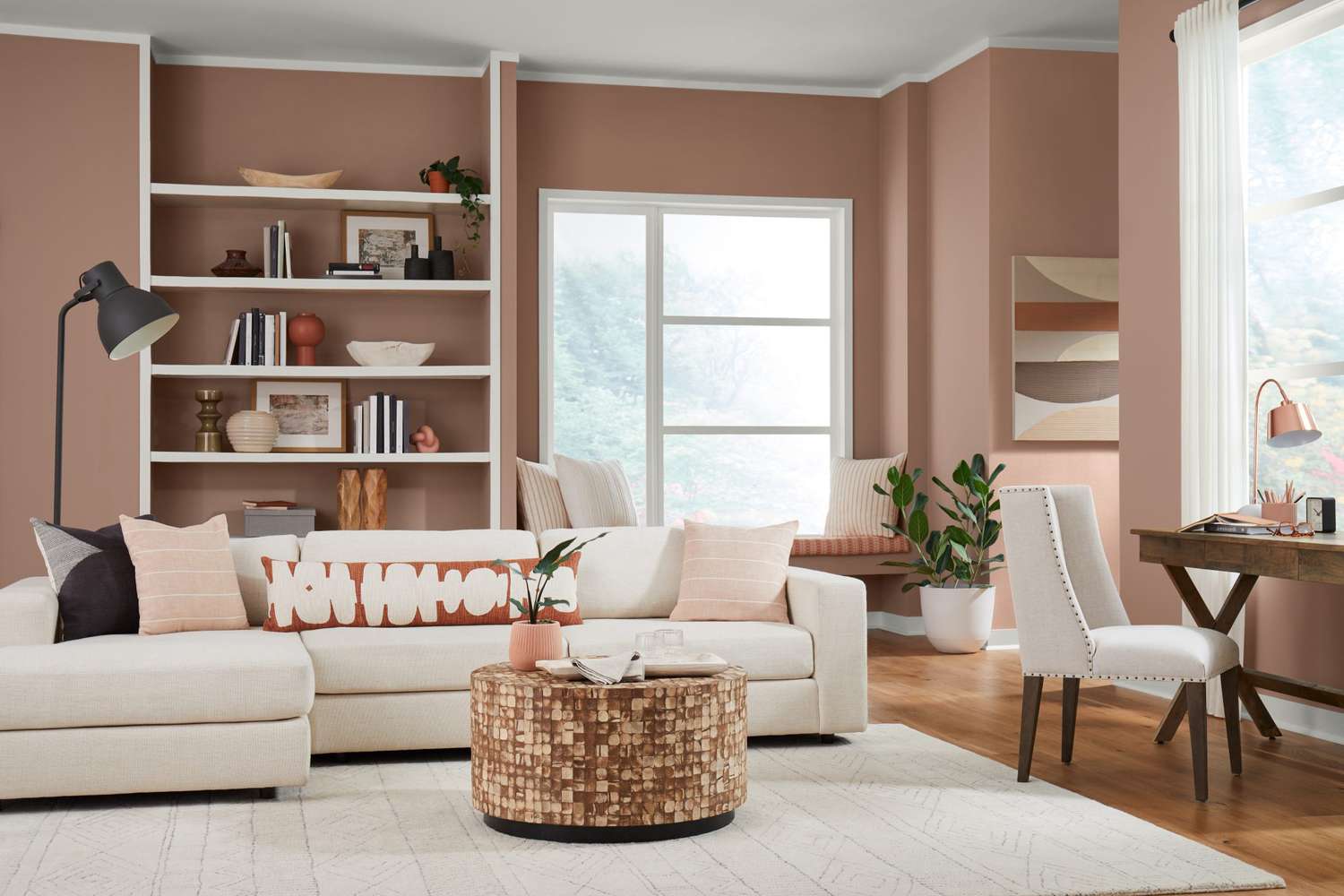
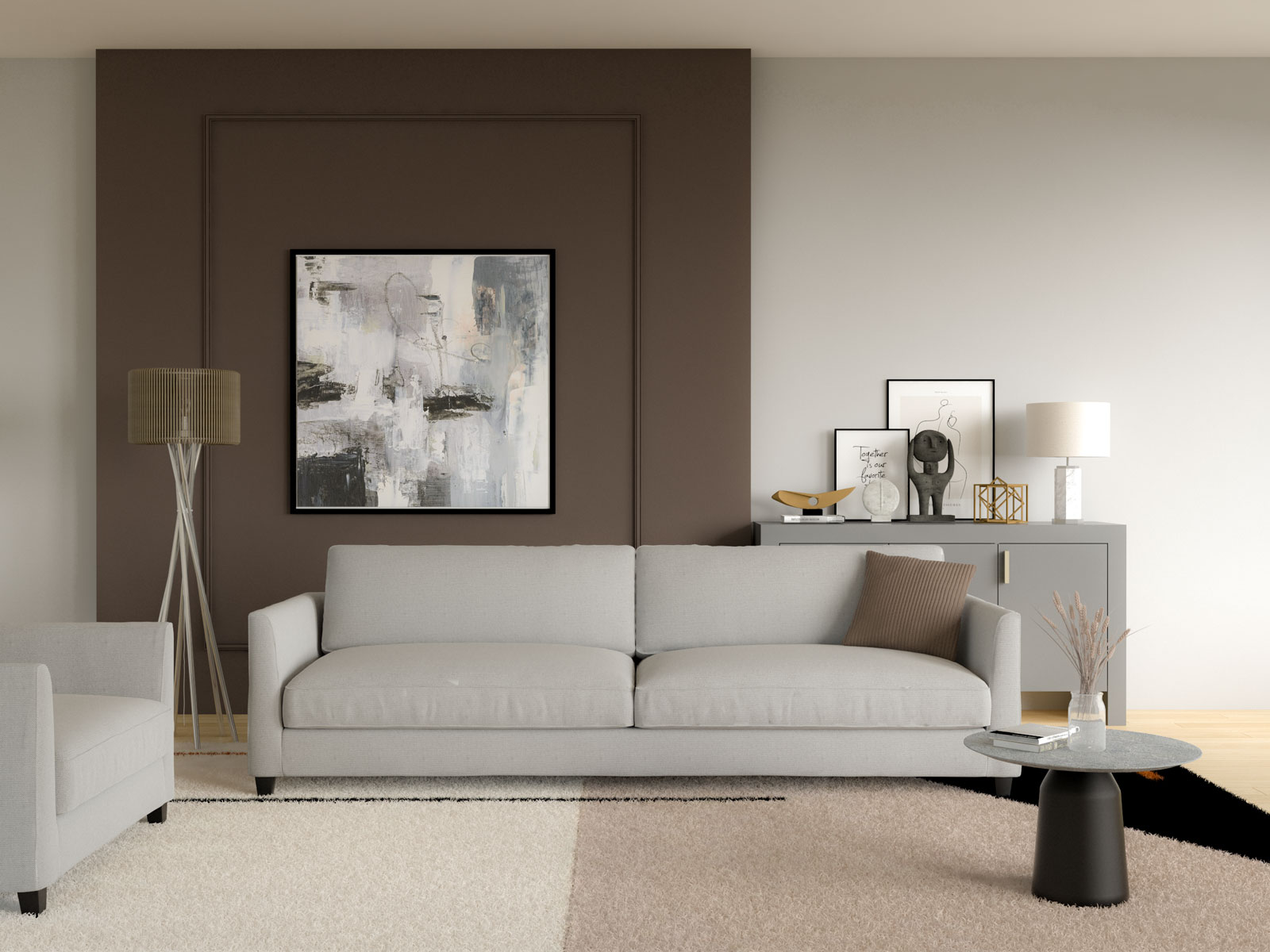
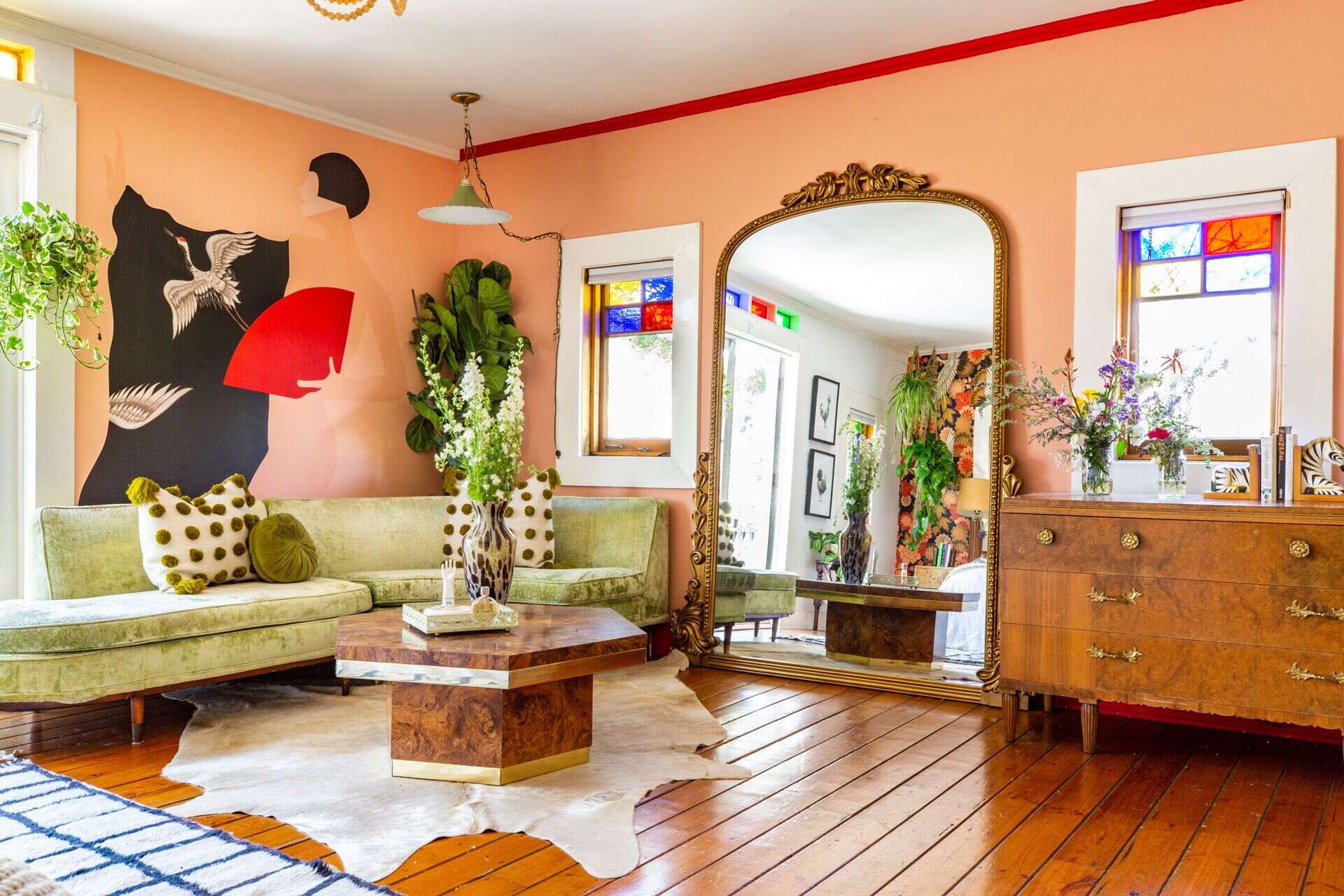
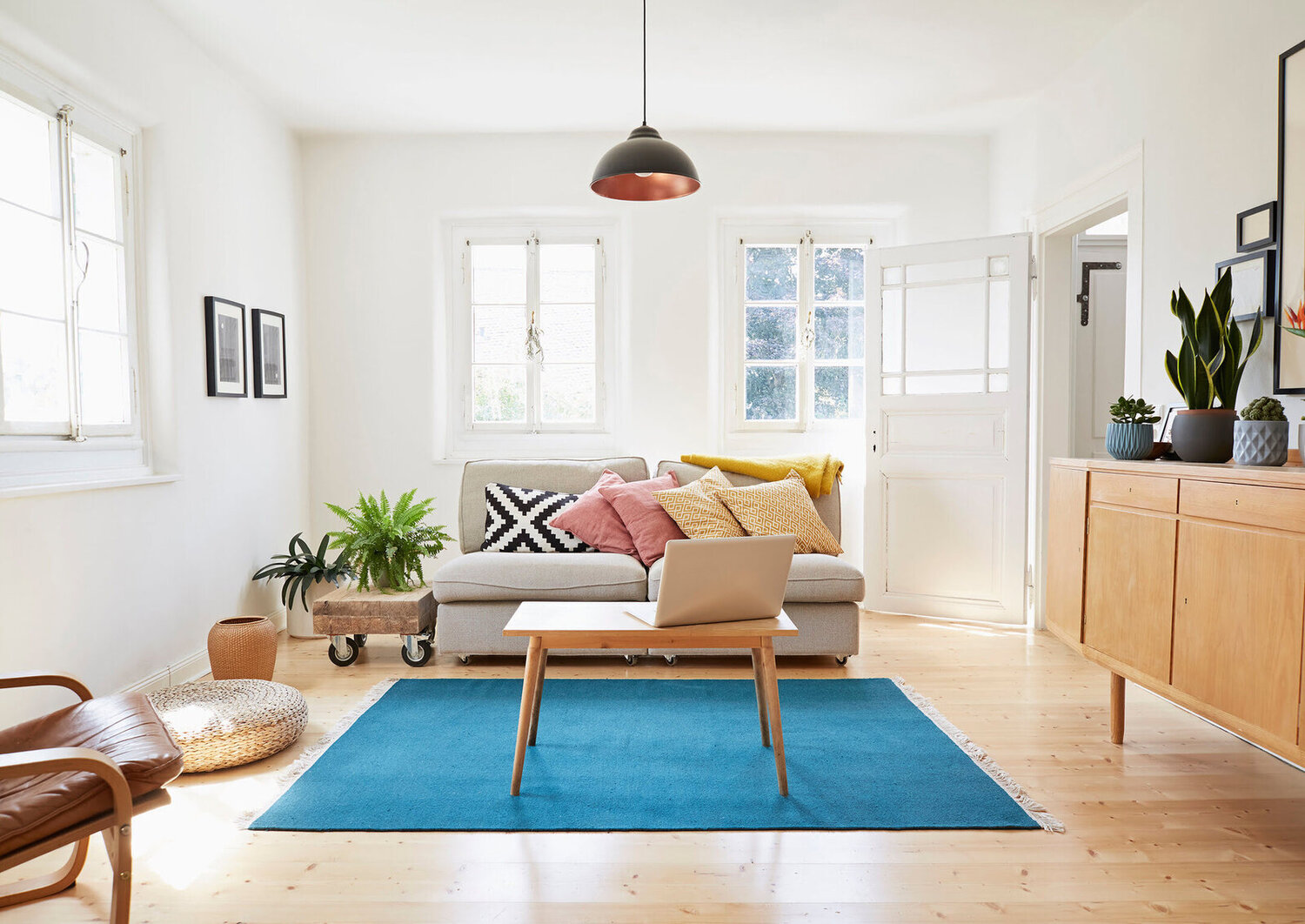
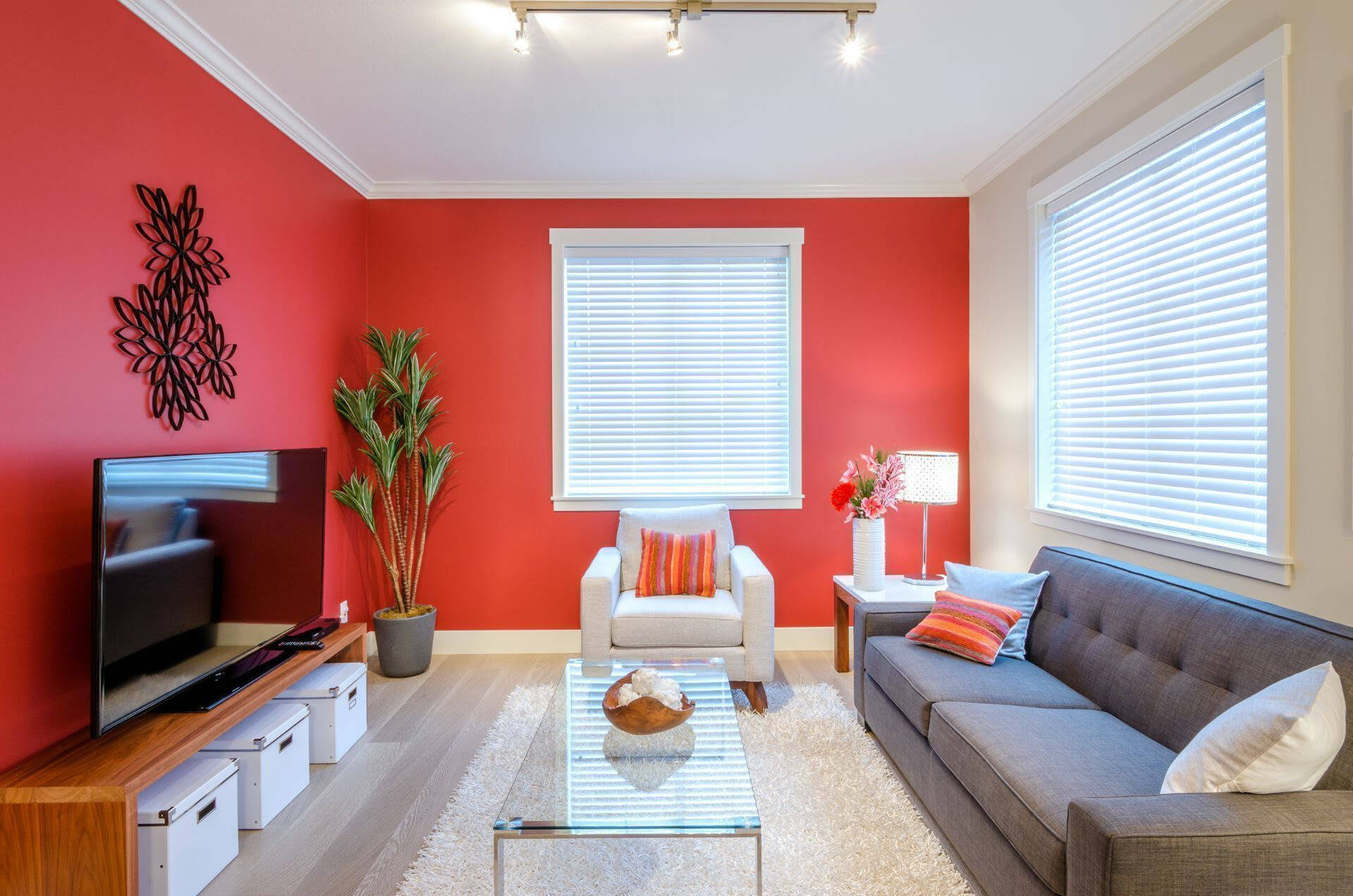
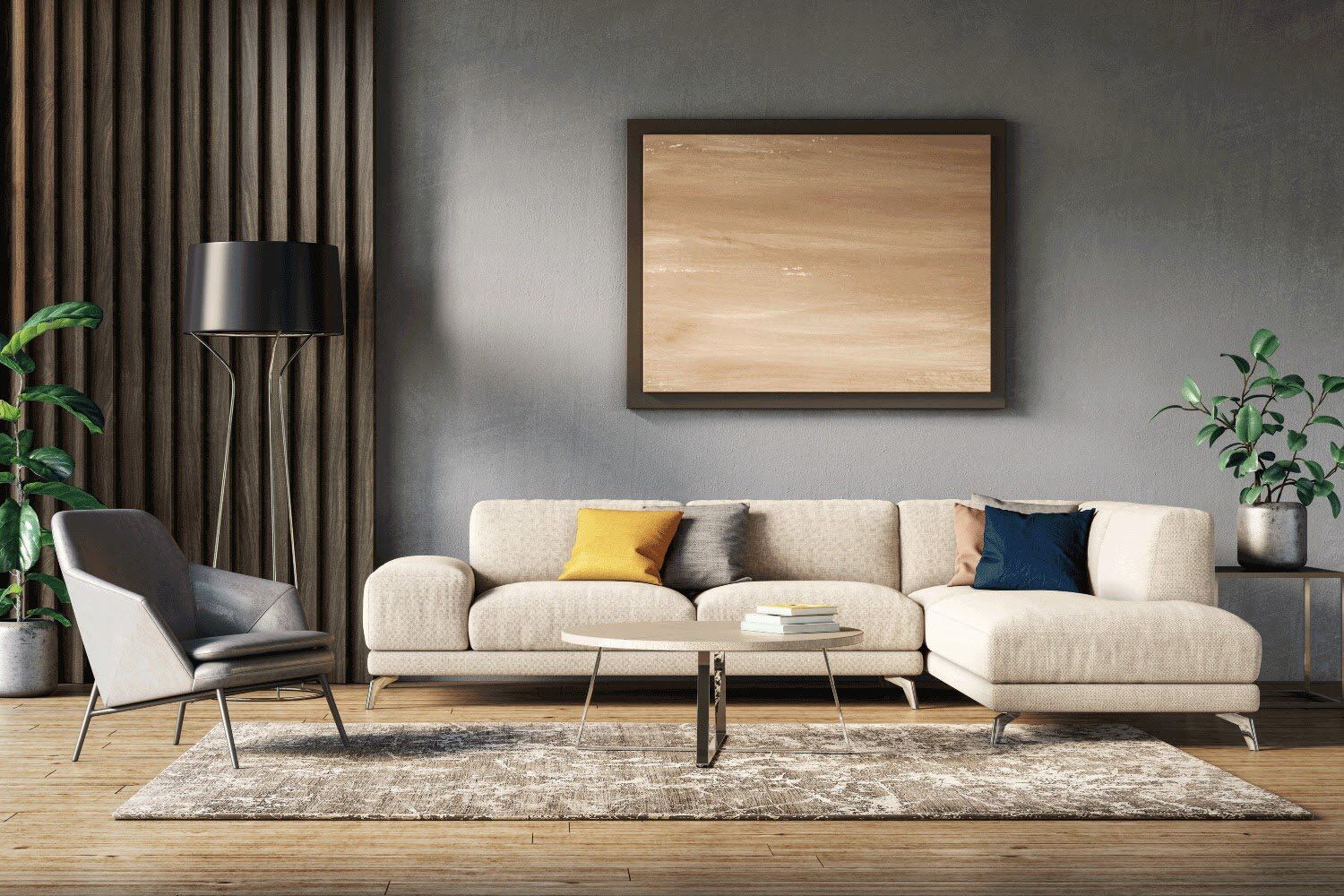
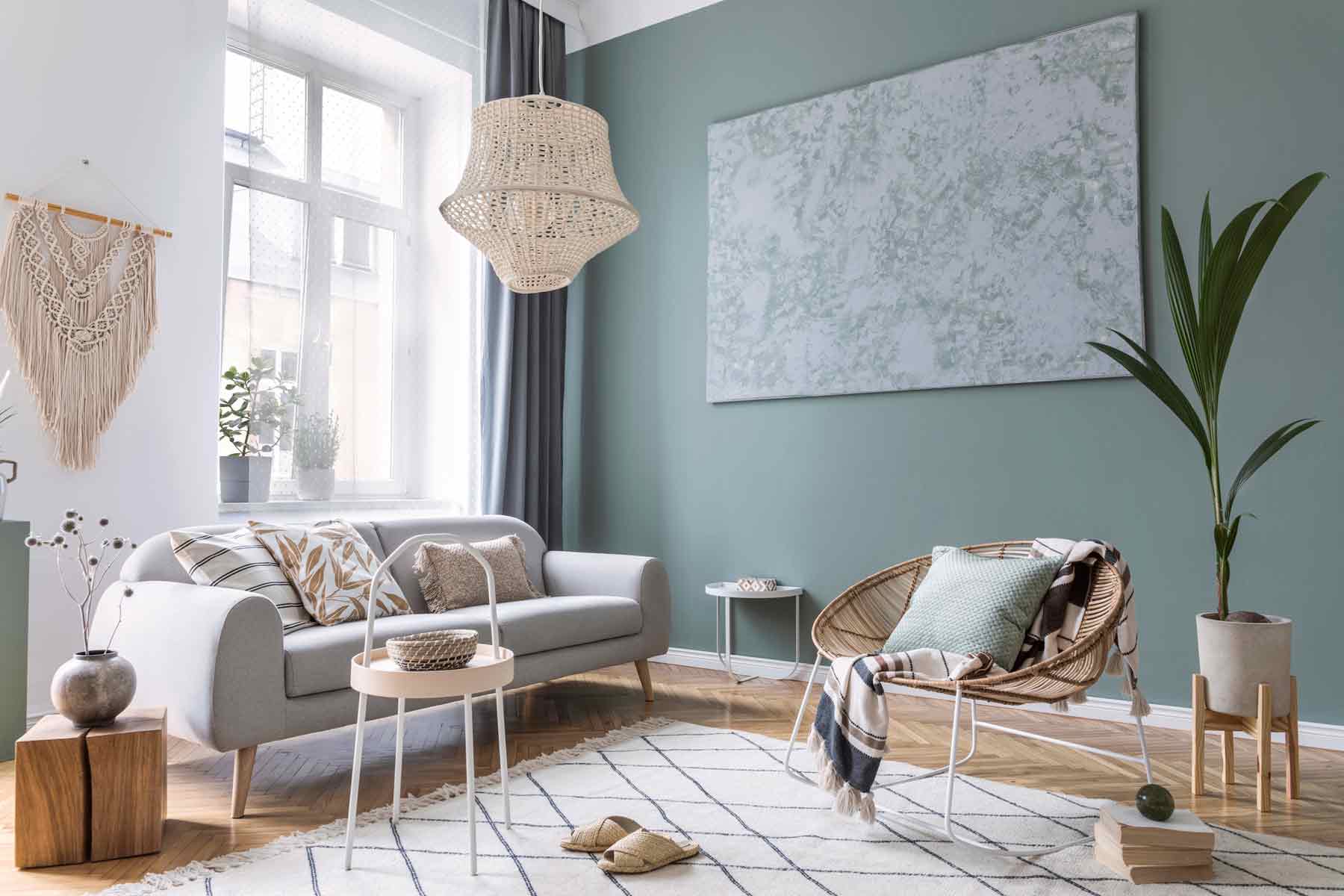
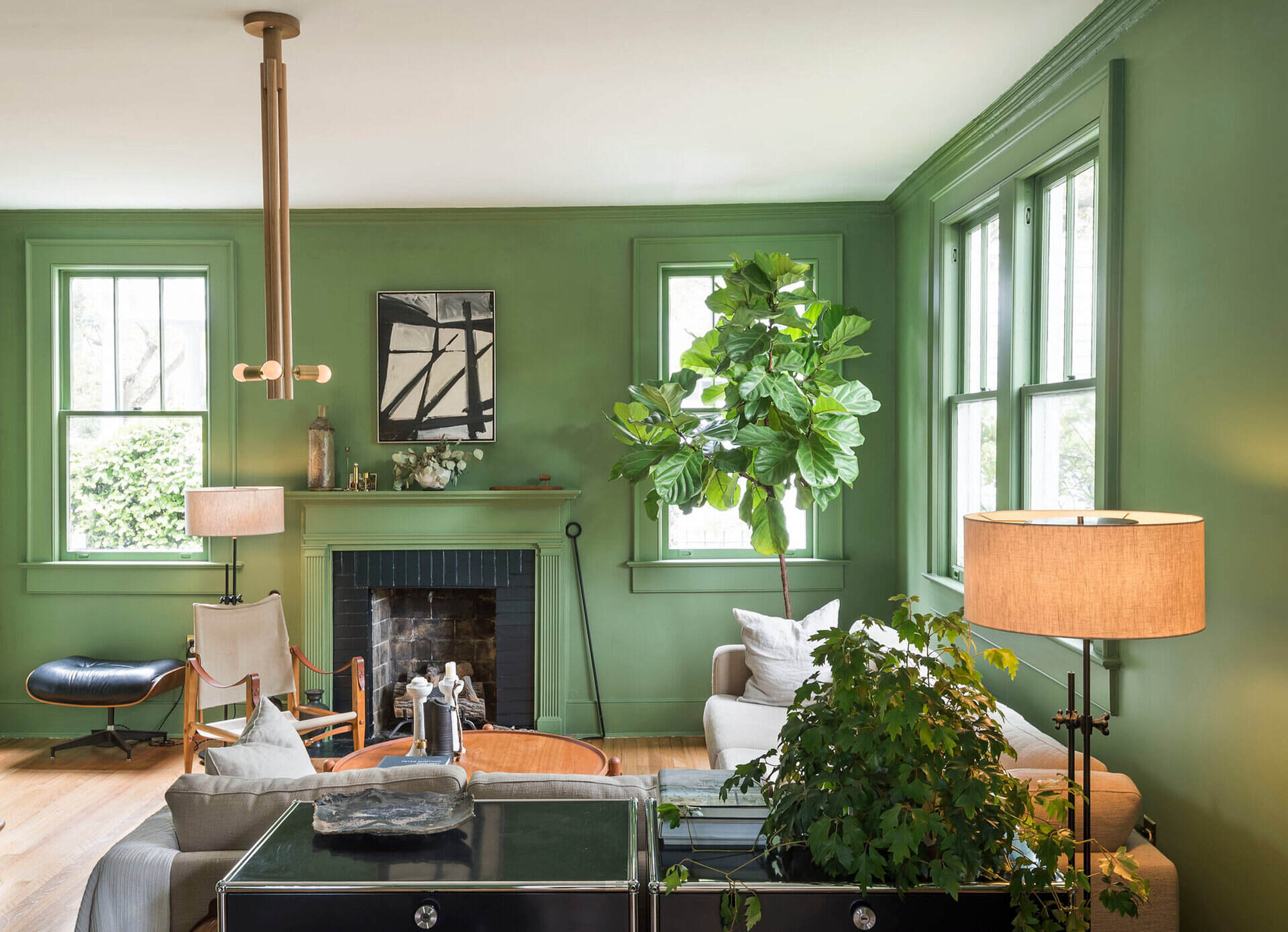
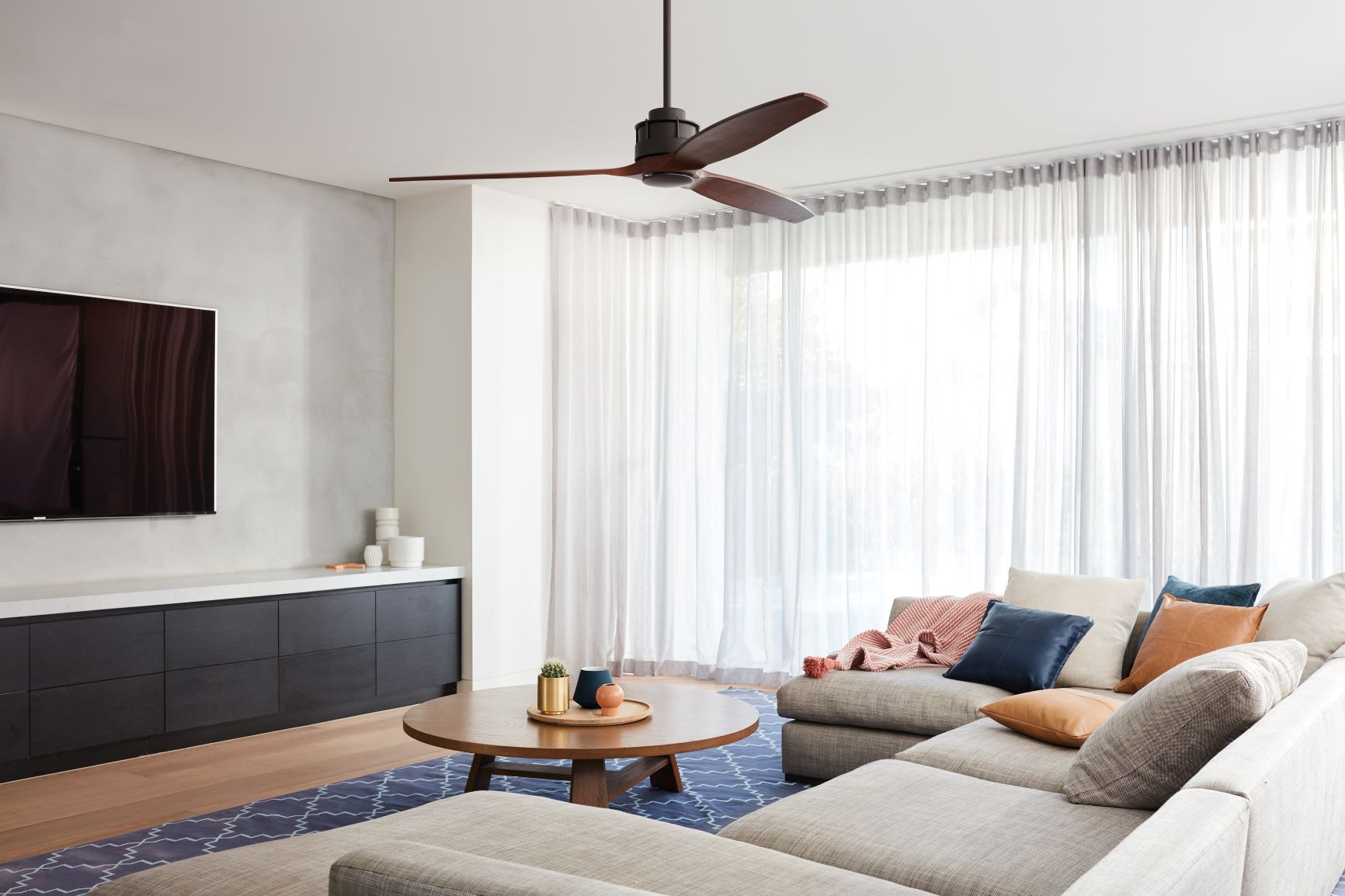
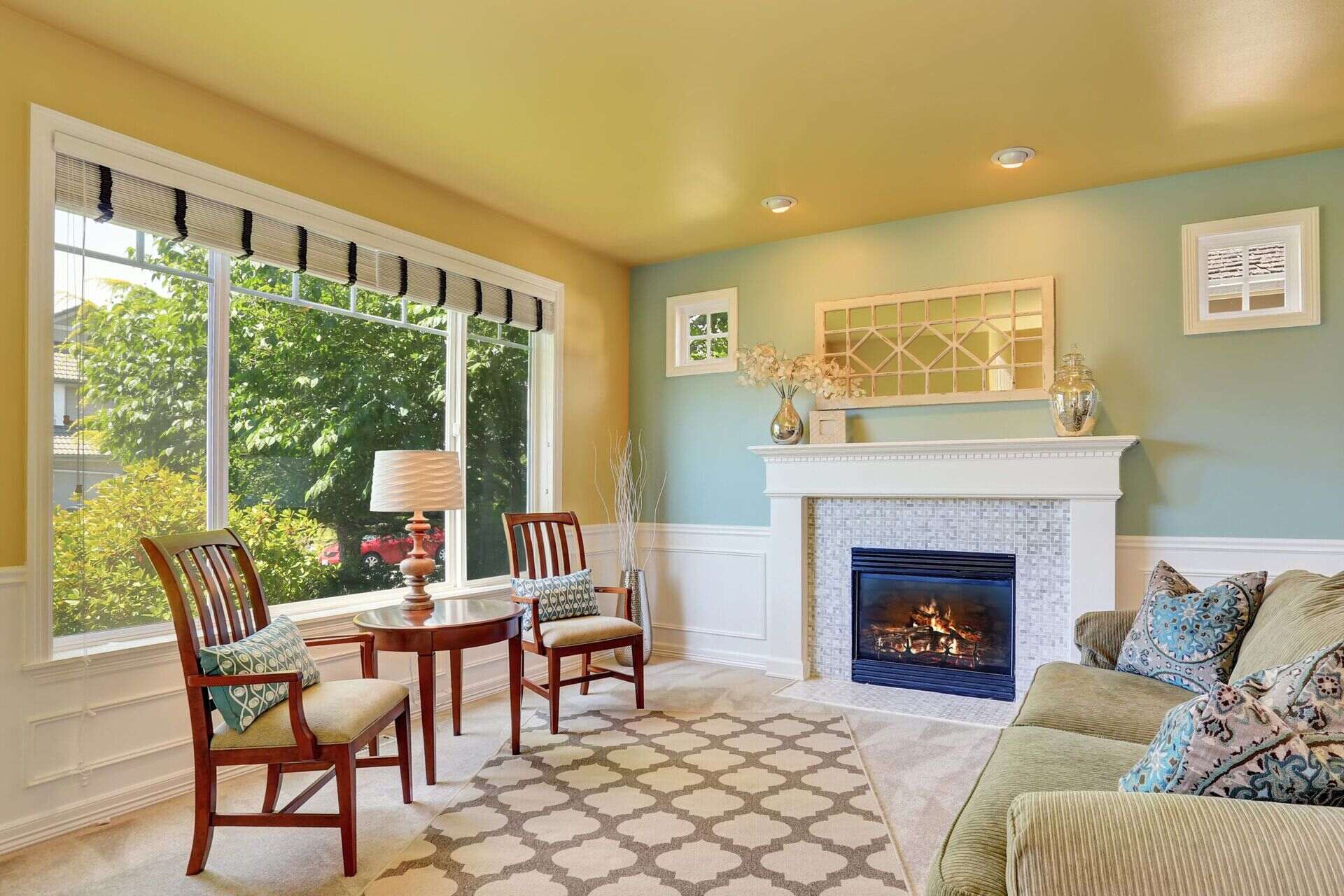
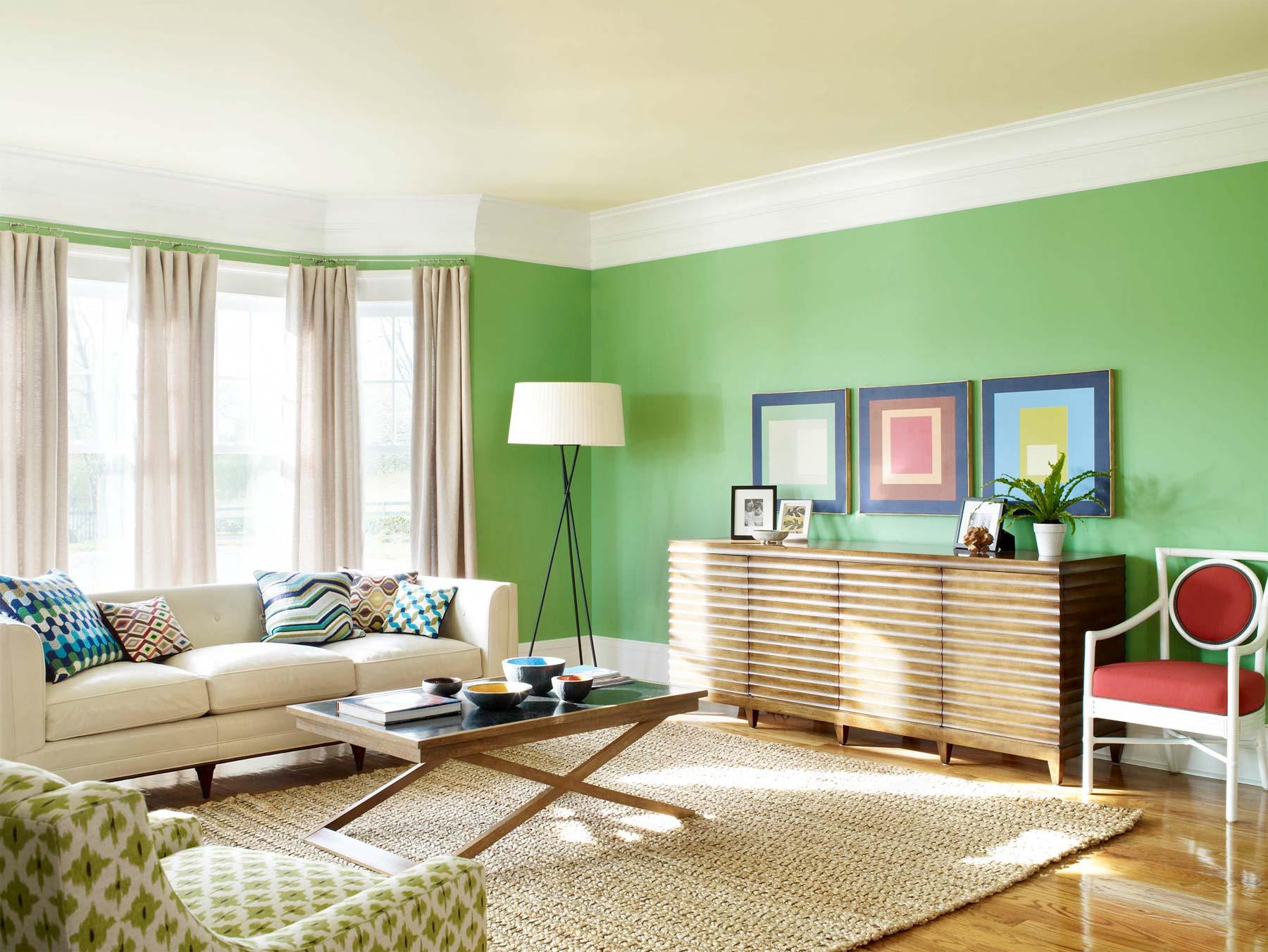

0 thoughts on “What Is The Best Paint Color For Living Room”